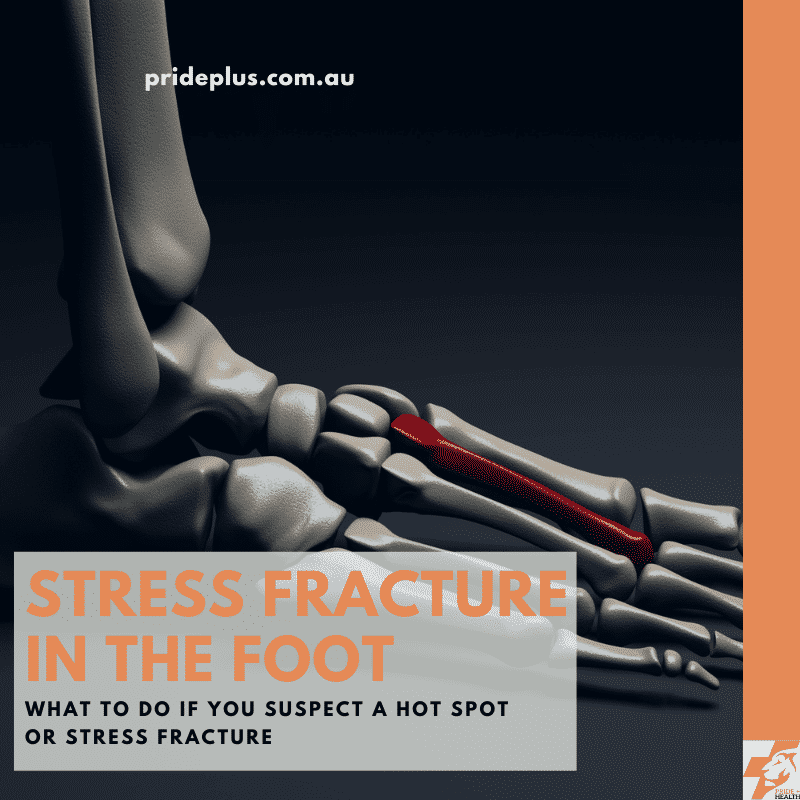A stress fracture in the foot is an injury that can strike down any of us. From elite athletes pushing their bodies to the extremes to us mere mortals. Anyone can develop a painful stress fracture in their feet if the right conditions arise.
For a few of thus, those conditions are becoming a little more common.
Let’s get into it!
Ok, so I am guessing that, like me, some of you have been hitting the treadmill a little too hard in a frantic effort to burn those extra lockdown calories – no judgement here!
I know that my feet and legs have not taken well to the switch to cardio from heavy, static lifting. I often wake up a little achy and sore.
Unfortunately, those aches and pains could be an indicator of something a little more than an over-worked muscle. If you have that sinking feeling that your foot pain could, in fact, be a stress fracture, here is everything you need to know…
What is a stress fracture in the foot?
A stress fracture is a small crack in a bone that is caused by repetitive force in a specific area over time. They are typically caused by a change in physical activity or a sudden increase in intensity (or a combination of both!).
Your feet do a lot of work when you exercise, which is why stress fractures generally show up in areas of the foot that are prone to taking on a lot of load. The most common areas are the metatarsals (the 3rd & 4th in particular) and the navicular bone.

Much like your muscles, bones also react to the demand placed upon them. When these demands are gradually increased over time, the body is able to remodel bone to increase its density and become bigger, better and stronger.
If, however, the activity is too much, too quickly, the body is unable to keep up with the repair and replacement required – ultimately leading to bone that becomes weakened and vulnerable to injury. In this sense, slow and steady really does win the race.
What will does a stress fracture in the foot feel like?
It will be sore. But specifically, it will be sore in a particular spot of the foot. This pain will, usually, ease off when you rest but will flare back up when you begin to load it again.
Swelling is also a very common sign that something is not happy. Although, on its own doesn’t specifically lead to a stress fracture diagnosis, inflammation can give a pretty good indication as to where the issue is within the foot.
Further to this, you may also notice that you begin walking differently in an attempt to keep off a particular area of your foot. Pain is a protective mechanism that your body uses to keep it from harm. In this way, changes to your loading patterns may very well be keeping you from doing further damage.
There’s often night pain with a stress fracture in the foot. If you have a throbbing or aching pain in your foot of an evening when you’re not actually on it that can be highly indicative of a stress fracture.
What should I do for my stress fracture?
You should stop overloading your foot. These injuries are caused by repetitive loading above your body’s capacity. Give yourself a rest and don’t “push through”, it will get worse and your recovery time may be extended significantly.
Stopping overloading, without stopping completely can be done effectively if you change your activities and what is on your feet. Activities like cycling or swimming put much less load on your foot bones than walking or running. Runners with orthotics custom made for your feet can reduce load on certain bones compared with casual, business or fashion footwear. Your podiatrist will be able to advise the ideal load optimisation for your stress fracture in your foot.
You can also start by trying to bring the swelling down by relative resting, icing and taking some anti-inflammatories (if safe to do so). Although this will not solve the problem, it will go a long way to easing the pain and allowing for a more accurate diagnosis as your pain will be specific to the injured site rather than just being sore EVERYWHERE.
Next, you really should see a podiatrist. Not only will we be able to aid your healing and recovery, we will do it in a way that prevents you from deconditioning too much, meaning that you are able to return to activity as soon as possible. We will also take steps to prevent this type of injury from reoccurring. By adjusting your loading patterns and specific strength and conditioning, we can “spread the load” and stop one area having to handle a load beyond its capacity.
Take Action
If you suspect you have a stress fracture in your foot book in online with our podiatrists in any of our clinics.
We’ll get you set up with a diagnosis and treatment plan to get you through your injury and back to you best.
Frequently asked questions about stress fractures in feet
Can you walk with a stress fracture in the foot?
Yes, with the correct load optimisation. It is important to get this right as it is a key component of healing. Typically speaking, this will involve the temporary use of a CAM boot; but depending on the severity of your injury, may be achieved through a much more comfortable option of an orthotic device in appropriate footwear.
How can you tell if you have a stress fracture in your foot?
Unlike your typical acute fractures, stress fractures do take a little longer to show up on x-ray imaging. For this reason, diagnosis is not as easy as “getting a scan”. As discussed above, you will generally notice point tenderness with pain increasing the more you load it. Swelling is also typically associated with stress fractures, but an accurate diagnosis is best left to your podiatry team.
What happens if a stress fracture is left untreated?
No prizes for guessing this answer; it will get worse. Stress fractures largely arise from movement patterns that overload one particular area of the foot. If left untreated, the fracture itself will not heal appropriately and pain will continue to keep you from activity. The deconditioning associated with this often results in an unnecessarily long return time.
What is the fastest way to heal a stress fracture?
Load optimisation + capacity building = fast healing + reduced risk of re-injury. Essentially, we want to spread the load through the foot, waking up those areas that haven’t been doing so much to prevent the overload of other areas. To do this, we need to build the strength of these deconditioned areas to handle the loads required.




